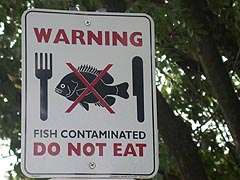If kind and sensible people could have their way, there would be many immediate and sweeping changes that would create extraordinary benefits for the vast majority of the people on Earth. Here are a few basic improvements that I believe any truly decent person would want right now. Most readers may find themselves mumbling to themselves, “Well of course…” as they examine the list. But most of these may be doomed to remain “’opeless fancies” to use Orwell’s worlds – never to become realities. Why? The most important reason they haven’t happened – and, in truth, may never happen – is that each one represents a diminution of power and wealth for a small group of the super-powerful elite who can be counted upon to block such reforms now and forever, to the extent of their abilities.
Having said this, here are a few ideas for your consideration:
1. Abolish corporate lobbying. Lobbying is the practice by which wealthy people, and the organizations they control, exert disproportionate influence on lawmakers; the word is nothing more than a euphemism for “corruption.” The most basic tenets upon which our nation was founded demand a lawmaking apparatus that operates with equal concern and attention to the needs of every citizen, independent of biases in favor of the interests of a small minority.
Our constitution provides the right to petition the government, but we can offer citizens ways to exercise that right without this horribly corrupt practice. In fact, the most common vehicle for corporate lobbying is the unwritten quid-pro-quo of significant campaign contributions – another euphemism—this one for “bribery” – in exchange for corrupted legislation.
2. Adopt dramatic campaign reform. Are we a better, stronger nation because only people who have, or can raise, hundreds of millions of dollars can effectively run for public office? Are Americans really better informed about the candidates because of the deliberately misleading tactics of their parties’ political campaigns? Should corporations – entities that are legally defined as “fictitious persons,” who transform themselves so easily into heartless greed machines – be granted influence equivalent to—of even greater than—the citizenry of “natural persons” in our nation’s discourse on vital issues? Of course not. The best solution is two-fold:
a) Eliminate this corporate bribery by outlawing donations from organizations, and then restrict all campaign fundraising to a maximum of $200 per individual per election – with strong legal measures to prevent corporate and political ‘bosses’ from ‘donating’ through large groups of individuals by way of collective coercion.
b) Limit campaign spending by requiring the media to perform the vital public service of allowing considerable free airtime (without any attendant commentary) to all candidates on the ballot.
3. Use anti-trust legislation to break up media monopolies. “Nobody ever went broke underestimating the intelligence of the American public,” H. L. Mencken famously said. Yet Americans are quite correct in their distrust of the media. Just six for-profit corporations own over 90% of the television networks, radio stations and print media. As a result, corporate agendas drive the process by which “news” stories are selected and covered, and thus how we Americans come to regard the issues of the day.
While ‘public television’ has consistently garnered the title of ‘most trustworthy’ in the eyes of the people, the corporate networks have simultaneously enforced a boardroom bias and subtly declared excess influence on the part of ‘liberal’ interests in ‘mainstream media.’ In fact, studies the media corporations themselves commissioned have revealed the opposing reality – that within privately owned media outlets, politically conservative and corporate interests dominate utterly. Progressive voices are consistently minimized and shunted into broadcast oblivion, while political divisions among the population are often played to and played up at every turn.
When we see what appears to be an open and lively debate on a certain subject, we need to bear in mind that we’re actually seeing a very narrow range of purified and sanitized ideas and information. If you think this assertion seems unfair, consider this question: How much airtime did Ron Paul and Dennis Kucinich get in the 2008 presidential campaign? When it became clear that both of these candidates were successfully showing the world exactly how the administration in power at the time had made a mockery of our constitution, they were immediately whisked off the stage.
The media want controversy, up to a point – something along the lines of Britney Spears’ remarkable comeback. But the idea that credible people were clearly explaining exactly how our national birthright had been systematically shredded by the most corrupt administration in its 235-year history was simply not going to happen.
Over one-third of the American people believe that the 9/11-commission report is essentially fraudulent – a cover-up for some sinister unrevealed reality. But has there been any active investigation by the media on the subject? Are there any mainstream “Woodwards and Bernsteins” on the case?
4. Reform states rights. As we might remember from our now-disappearing civics courses and history courses, the story of the United States through the 18th and 19th Centuries was fundamentally one of the struggle to create the delicate balance of power at the state versus federal level. The debates on the subject that were at the forefront of the early days of the Articles of Confederation and the Constitution became even fiercer during the years leading to the US Civil War and the Reconstruction.
Unfortunately, this left us going into the 20th Century with a huge, unfair, wasteful mess that has only gotten worse over the last 100 years as bureaucracies have expanded and been exploited by the ruling class. At incredible expense, we have 50 different sets of criminal codes, civil statutes, state tax regulations, transportation standards, criminal sentencing guidelines—even driving laws. And why? Does anyone think drivers in Mississippi need to follow a different set of regulations than the people in Alabama? Perhaps that’s a somewhat trivial example, but does it seem right that second-degree murder in one state is treated in a completely different way than it is in another?
Additionally, this concept of state vs. federal power has too often been used as a stalking horse by recent administrations in order to manipulate public opinion in favor of pet projects and prejudices. Perhaps most notably, administrations have invoked states rights to defend “Right to Life” attempts to re-establish and expand state government authority over a woman’s reproductive liberty. At the same time, these same administrations have ignored states rights when states like California (and the ten other states who followed) moved to enact more stringent air quality regulations and higher fuel efficiency standards for vehicles.
Perhaps worst of all, each senator and representative in Washington stands for the interests of the people in his home state, and these interests are normally very parochial and narrow, and often completely opposed to the welfare of the average US citizen.
5. Abolish the Electoral College. The president of the US is elected by an Electoral College; this means that the people in a few “swing states” have thousands of times more influence per capita on the outcome of a national election than people in the rest of the country. The Electoral College was originally conceived as a method to balance the weights of states with large and small populations, and not least to provide a measure of safety against populist dictatorship by a skilled manipulator of an ignorant public mind – as its members could, if so
me hidden wisdom prevailed, vote differently from the populations within their states. The Electoral College is a fossil from a bygone political era, and it has far outlived its utility.
6. Set a one-term limit for all elected officials at the national level. As suggested above, we currently have huge incentives for our elected representatives to push for pork-barrel bills that favor the wealthy people of a certain state, at the expense of the taxpayers in the other 49 states. Every year this results in trillions of dollars of wasteful – and in some cases actually destructive – projects. In the field of energy and transportation alone, our heavily lobbied Congress supports coal, oil, nuclear, and biofuels. At the same time, these interests are busily deploying disinformation campaigns to convince us that clean energy, e.g., solar thermal and electric vehicles are not ready for large-scale deployment.
For a textbook example of this, look at corn ethanol – probably the biggest hoax ever perpetrated on the American taxpayer. As anyone could have seen going into this, the cost of re-purposing the land, planting, irrigating, fertilizing, harvesting, and processing the corn, shipping and dispensing the fuel, and then cleaning up the rivers from the damage this has all created, far outweighs the benefit of corn ethanol vis-à-vis oil – and burning the ethanol stillproduces carbon dioxide. Also, the inflationary effects on food prices across the American menu were, at best, ill considered. The whole project is completely destructive to everyone living on this Earth except the few people who grow corn and are elected by the money from the corn industry. Does anyone believe for a minute that we would have huge federal incentives for corn ethanol if it weren’t for the corrupt power wielded by corporations like Archer Daniels Midland and Cargill over our representatives throughout the corn-belt?
Also consider the unwarranted weight that nuclear energy now possesses in our political sphere. There is an extraordinarily helpful body of reasoning behind the private sector’s persistent refusal to invest in (or even to insure) nuclear power. Nuclear reactors are spectacularly expensive to build – in fact, cost overruns of 200% to 500% are virtually universal by the time such projects are finally completed. This method of power generation is especially pricey when a genuine accounting is taken of the total costs – both in energy and in money – of mining and refining the fuel, and of then recycling and storing the toxic waste for thousands of years. Even then, the useful lifespan of these reactors is prohibitively short. Nuclear energy is neither cheap, nor clean, and yet financially interested parties are fiercely lobbying our representatives in the national government to subsidize and deregulate this failed industry.
By eliminating the incentive for re-election fundraising, we can at least hope that some of the people representing us will vote for the things they believe to be good and right, rather than the things that enrich the powerful people in their home districts.
7. Enact tort reform. Six-figure medical malpractice insurance premiums represent a cost that is passed on to you and me in the form of skyrocketing healthcare costs. Juries hear cases of failed surgeries, or product failures, or traffic accidents, and hand out damage awards that are sometimes measured in the tens of millions of dollars. Of course, our nation’s 1.1 million lawyers are having a terrific time exploiting this terrible defect in our society – often walking away multi-millionaires from the proceeds of a single case.
Not surprisingly, tort attorneys are not at all appalled by the fact that we are the most litigious civilization on Earth. They oppose capping damage awards and defend this practice and as necessary to keeping companies from passing along risks to their customers. Unfortunately, as in most of these cases, we have the proverbial fox guarding the hen house, as attorneys—both in the public and private sectors—make the very rules that will govern their activities.
At the same time, however, the right of redress must not be eliminated – and more particularly, the level of damages awarded must remain sufficiently punitive to create pause in the minds of corporations when the temptation arises to make a quick fortune by defrauding and endangering the public. A delicate balance must be found between redress and abuse – perhaps a significant share of a larger settlement could be given to appropriate charities or research programs that are related to the cause of the case in question.
8. Reform the agenda of the FDA and greatly limit its power. Some people believe the government has the imperative to tell them what substances they can and cannot ingest. Some people believe that government agencies function primarily to protect the health and safety of the citizens. I happen not to be a member of either group. But even if I were, I’d stillhave difficulty accepting the way the FDA works with the pharmaceutical industry to approve certain drugs despite clear clinical evidence against a risk/benefit-based endorsement, while making it illegal for purveyors of herbal remedies, minerals, vitamins, etc. to promote the internationally recognized curative powers of their products. No one can reasonably object to the FDA coming out with statements based on peer-reviewed clinical studies, and enabling manufacturers to quote those statements in their product packaging, at their option. But it is a grievous disservice to the public to build a system that fosters the myth that only drugs, as prescribed by medical doctors, are effective in healing.
9. Eliminate direct-to-consumer drug advertising. The United States is one of only two counties on Earth that permits this incredibly expensive assault on its citizens. As has been amply documented elsewhere, the pharmaceutical industry systematically convinces Americans that they have some unwanted condition: excessive perspiration, erectile dysfunction, unnecessarily frequent urination, restless legs, etc.—then promotes fantastically profitable drugs to cure these conditions. This is just plain wrong. Let’s join with the other 99% of the countries on the planet and get rid of this revolting display of greed, corruption, and the manipulation of our people.
10. Adopt universal health care. Quite understandably, our insurance companies, pharmaceutical companies, and health care establishments are fighting hard against this idea. We need to ignore them and do the right thing. Get rid of the forms, the bureaucracy, the middlemen, and the insurance companies. With the stroke of a pen, create a system in which when a citizen becomes sick or injured, he goes go to a doctor who tries his best to make him well again. Contrary to the propaganda purveyed by the health insurance and pharmaceutical interests, the private sector has clearly demonstrated that it is far less efficient at providing healthcare than nationalized systems that dominate the developed world.
In fact, a brief unvarnished history of our country’s transition from what was once known as the ‘field of medicine’ to the ‘healthcare industry’ will show that we now pay double the cost for a fraction of the access as compared to other advanced nations. Our population sacrifices greatly to support the massive overhead of bloated executive compensation and shareholder dividends. Combine that with the merciless gouging tactics of drug companies that take research from the taxpayer-subsidized public sector and then charge usurious multiples of a reasonable profit at the pharmacy counter.
Another considerable advantage to single-payer national healthcare is the demise of the competitive edge that Japanese and German and Swiss companies hold over American firms by virtue of their nations’ wisdom. While the cost of employee compensation amounts to only 10
% of the selling price of an automobile in the US, the biggest single cost that Detroit pays – more even than steel – is for health insurance. It’s a common but grim jest that GM is more a health insurance company than a builder of personal transportation. Our economy would get a considerable shot in the arm if this healthcare burden were lifted from the backs of entrepreneurs and spread evenly across the whole US population.
11. Repeal all laws against victimless crimes, created solely by greed and corruption. As one of hundreds of examples, we should legalize marijuana, a relatively innocuous drug whose effects on society and individuals are far more benign than those of alcohol. Alcohol is physically addictive and horribly debilitating, and holds its monopoly status as the only legal recreational drug merely because of its powerful lobby, and the fact that marijuana is harder for the government to tax because it is so easily grown for personal use.
Our nation would do well to observe and emulate the success of the many drug decriminalization and treatment programs worldwide. The nation’s courts should apologize to the millions of non-violent drug users who are in prisons around the country, and release them immediately into treatment programs that address their addictive behavior. The ‘war on drugs’ can only be won by addressing the demand.
12. Invest in programs that keep people out of prison, and prevent the private ownership of prison systems. The US incarcerates more than 1% of its adult population, about 2.3 million people—far more than any other country on Earth. Even ignoring the enormity of the human misery of the inmates and the families from which they come, the process of incarceration itself is fantastically expensive, and its continuing failure is illustrated by the overwhelming rate of repeat offenses. In addition to the incarceration of non-violent drug users, the misguided practice of “third strike” laws that blindly mandates a life sentence without parole, for stealing a slice of pizza or a DVD, has only contributed to this meteoric rise in prison populations.
Yet in the face of these realities, we as a nation nevertheless seem willing to expand the prison population without limit. Apprehending, prosecuting and locking up criminals for increasing lengthy terms has become a burgeoning and profitable industry; current trends include the privatization of prisons and private colleges offering courses of study for those wishing to prepare for a “career in criminal justice.”
As a culture of tough-minded individualists, we don’t seem to have a problem with this direction. Yet we are reluctant to pay our children’s teachers more, and to invest more in programs that promote compassionate morals, hard and smart work, sexual responsibility, family unity, honesty, genuine drug awareness, etc.
Meanwhile, private prison companies are more and more swaying the policy decisions and the budgets of states and municipalities to prefer back-end band-aids for a hemorrhaging criminal housing problem over wiser and less taxing front-end education, counseling and prevention strategies. In short, it’s much less expensive to provide opportunity for the future than to maintain dead-end cages.
At the same time, the enactment and enforcement of legislation designed to prevent and punish corruption at the highest pinnacles of our society must be equally fortified, lest we find our Justice system all too aptly described by the 18th century observation, “The law, in its infamous equality, forbids both the rich and the poor man to beg in the streets, to sleep beneath bridges, and to steal bread.”
13. Abolish capital punishment. The US is one of a handful of countries that still executes people. For some reason, we haven’t yet realized that state-sponsored killing is simply not a part of a civilized society.
Also worthy of consideration is the growing discovery of wrongful convictions as a result of mishandled evidence, incompetent defense, corruption in law enforcement personnel, and just plain honest mistakes, during capital murder trials. Of secondary importance but worth notice is the fact that, while keeping people in prison is expensive, executing them is far more expensive when one considers the average total cost of an execution.
14. Act decently outside our borders. If we really want to stop terrorism, we need to stop doing things that many people deem to be terrorist acts themselves. Stop attacking nations that have not attacked us. Our trigger-happiness abroad has (by our own generals’ admissions) served merely to multiply the threats against our interests.
Withdraw support of repressive regimes around the globe, and of all governments that favor violence over diplomacy. Don’t stand idle while genocide is taking place, simply because the combatants happen not to have a direct effect on “US interests.” Stop US-based corporations from building products in other countries with child labor, and with processes that rape the local environments. If we do these things, we’ll see an immediate improvement in the way in which the US is regarded abroad, as well as in the success of our diplomatic efforts around the world.
The suspicion that good ideas may never see the light of day may seem sullen and pessimistic. Perhaps we simply find ourselves standing in the place that hundreds of generations have stood before ours—one that can be summed up with the famous quote of 18th Century British statesman Edmund Burke: “The only thing necessary for evil to triumph is for good men to do nothing.”
So let’s do something. Please comment on this, bookmark it, and link to it. Let’s talk. If you think I’m guilty of oversimplification, or that some of these ideas are just plain wrong, I can handle that. I urge you to do anything but remain silent.




 I just spoke with a fantastic young man by the name of Jake Stewart. Not to devaluate anyone’s commitment and importance in the movement, but no credentials are required to be an advocate of renewable energy. By contrast, Jake brings a level of sophistication that really makes the hair on the back of your neck stand up.
I just spoke with a fantastic young man by the name of Jake Stewart. Not to devaluate anyone’s commitment and importance in the movement, but no credentials are required to be an advocate of renewable energy. By contrast, Jake brings a level of sophistication that really makes the hair on the back of your neck stand up.
 I do not claim to be an expert in the process of petitioning the Obama Administration’s Department of Energy for grant money in renewable energy. However, I very much realize that this is important to a great many readers. For that reason, I will post links to important sites on this subject.
I do not claim to be an expert in the process of petitioning the Obama Administration’s Department of Energy for grant money in renewable energy. However, I very much realize that this is important to a great many readers. For that reason, I will post links to important sites on this subject. 
 Sadly, only a few of us who grow up in our western civilization really consider an alternative to becoming a part of the traditional economic machine. While we try to choose a career path about which we feel a certain spark—a spark that may come from helping others—only a few of us make enormous sacrifices and take on lives of pure compassion.
Sadly, only a few of us who grow up in our western civilization really consider an alternative to becoming a part of the traditional economic machine. While we try to choose a career path about which we feel a certain spark—a spark that may come from helping others—only a few of us make enormous sacrifices and take on lives of pure compassion.